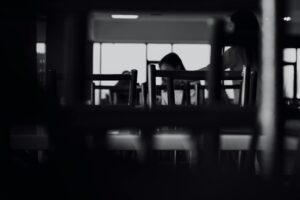By Ronnie Weiss
Either/or, all or nothing thinking is easy to fall into. We see examples of it all around us and children often start from a place of binary thinking: That’s not fair! That’s bad, etc. How do we help kids begin to understand their world through different perspectives and to embrace the concept that opposite viewpoints and opinions can co-exist? Below are book suggestions* from our Reading for Peace program volunteers that can serve as a way to introduce and discuss the concept of Both/And with young children:
- Celebrate Our Differences by Steve Herman, grades 3-5, increases understanding and acceptance of diverse friends.
- I Talk Like A River by Jordon Scott, grades PreK – 3, tells the story of a boy who talks with a stutter.
- A Head Full of Birds by Alexander Garibal, grades PreK – 3, teaches about diverse friendships.
- Be Who You Are by Todd Parr, grades PreK – 1, encourages to be proud of who you are.
- I Am You by Refiloe Moahlol, PreK-3, shares an understanding of how we are all connected.
These books in particular highlight the ideas of honoring differences, being proud of who we are and understanding each other’s unique perspectives. Reading these books (or ones with similar messages) can prompt parents and children to have important conversations. These conversations are a great way to teach the concept of both/and. While reading the books you can ask questions like these:
- What do you like about yourself?
- How are you and your friends similar? How are you different?
- What is the message of this book?
- What does this book tell us about understanding other people?
- What would you like others to understand about you.
- How can you support your friends? How do you like to be supported?
Reading books like these and having conversations with kids about them allows space for nuance, being open minded, and thinking critically is crucial in a world that often tries to put people into boxes. Both/and allows for diverse experiences and opportunities to present themselves as we build relationships and solve problems.
*book suggestions contributed by Reading for Peace volunteer, Cathy Atkinson.



